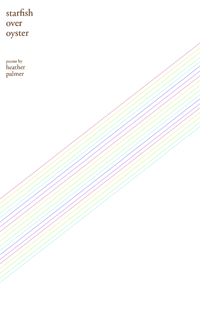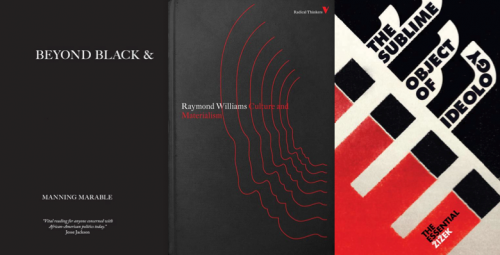Starfish Over Oyster by Heather Palmer
 Starfish Over Oyster
Starfish Over Oyster
by Heather Palmer
Love Symbol Press, May 2013
60 pages / $12 ($1 PDF) Buy from Love Symbol Press
If you didn’t know how a starfish eats an oyster it does it like this,
“…the starfish’s mouth, which is located under its body, present a problem, it is smaller than an oyster. And the oyster presents another problem; it is protected by a hard shell. So when a starfish finds an oyster, it climbs on top of it and locks its many arms around the oyster’s shell, then tugs on the shell until the oyster is too tired to hold it closed anymore. When the shell opens, the starfish turns its stomach inside out, drops it over the oyster’s body, then draws it in again when the oyster is nearly digested.”
(from big site of amazing facts)
There’s no description of the act itself in Heather Palmer’s Starfish Over Oyster (except the reference in the title) but I’ll be damned if it isn’t a great metaphor for a book about hunger control, voice and violence. Starfish Over Oyster takes place in the mouth and the stomach. Heather Palmer writes like a shotgun blast and a jawbreaker. There’s a burst of ideas tucked into an intimate shell you have to suck on. Each line is compact and dangerous; some slip by while others kept me rereading them or turning back to them pages later.
Visually the book is beautiful. The layout looks perfect. Everything seems so precise, largely due to the pages’ ample negative space. The poems themselves, flush left and right, look like constrained little packages, small but dangerous. That being said, Starfish Over Oyster takes time to process; there’s no fat in the language and the subject matter is dark. It’s about a girl consumed by a city, her father, and hunger itself.
urbanity for her ready-meal
nothing will city a justified
stomach refuse curses the fruit
bowl
May 20th, 2013 / 11:00 am
25 Points: Variations on the Sun
 Variations on the Sun
Variations on the Sun
by M Kitchell
Love Symbol Press, 2012
88 pages / $12 (print) $1 (digital) buy from Love Symbol Press
1. I think I bought the last physical copy of this book, but you can still buy it in pdf form. Hopefully there will be another print run or something cool happens in a second edition.
2. When I opened the envelope I thought the book was damaged because it had what looked like worn out areas on all the areas that a book normally gets worn out areas. I was kind of pissed. Those are actually just part of the design. I am really excited about that now. It reminds me of Scorch Atlas, though much more subtle, crisp, and clean.
3. The cover design reminds me of these books by Verso:
4. I don’t think any description of the book I read in advance of reading the book, does the book any justice. This kind of writing:
“
i can’t help but feel totally fucking outside of myself when i try to come to terms with my position as a body a human body in the midst of whatever-the-fuck-it-is that i’m trying to do
“
– THE SALT VOICES
is next to this kind of writing:
“
There are no faces on the bodies, no arms, no legs, no genitalia, no hair, no eyes, no fingernails, no fingers, no hands, no toes, no feet, no ears, no nose, no mouth, no eyebrows, no eyelashes, no eyes, no chest, no armpits, no nipples, no bellybutton, no ass-hole, no ass, no crotch, no torso, no hips, there are no bodies.
“
– THE NEGATION OF BODIES
There are lots of other tones and styles inside the book as well. There are also photographs. Everything looks really nice.
5. This is the first book from Love Symbol Press. If they keep this up, they will be my favorite press.
6. At times Variations on the Sun reads like a textbook on architecture. There is also a lot of violence, but sometimes it’s very cute. And other times it’s very stark. At other times still, very baroque. I have a hard time finding other poetries that compare to this one.
7. Last time I talked to Evan Lavender-Smith, he used the term New Brutalism to describe the style of Blake Butler, Christopher Higgs, M Kitchell, Ken Baumann, etc. I find the term pretty accurate when compared to Brutalism, the architectural movement born out of post-WWII Europe. At first I thought he was just riffing, talking about Blake’s review of Leaving the Atocha Station, but it made sense: New Brutalism, a literature born during the Global War on Terror.
8. I don’t really know anything about architecture, outside of wikipedia and some art history classes as an undergrad, but I find the way Brutalist structures are described by Prince Charles to be pretty amusing: “You have to give this much to the Luftwaffe, at least when it knocked down our buildings they didn’t replace them with anything more offensive than rubble.”
9. Other than things online, I haven’t read anything by M Kitchell before.
10. Looking at works of New Brutalism would be a good way to enter the book, but so would the works of New Sincerity, especially the poetry of Tao Lin. READ MORE >
December 6th, 2012 / 9:09 am

